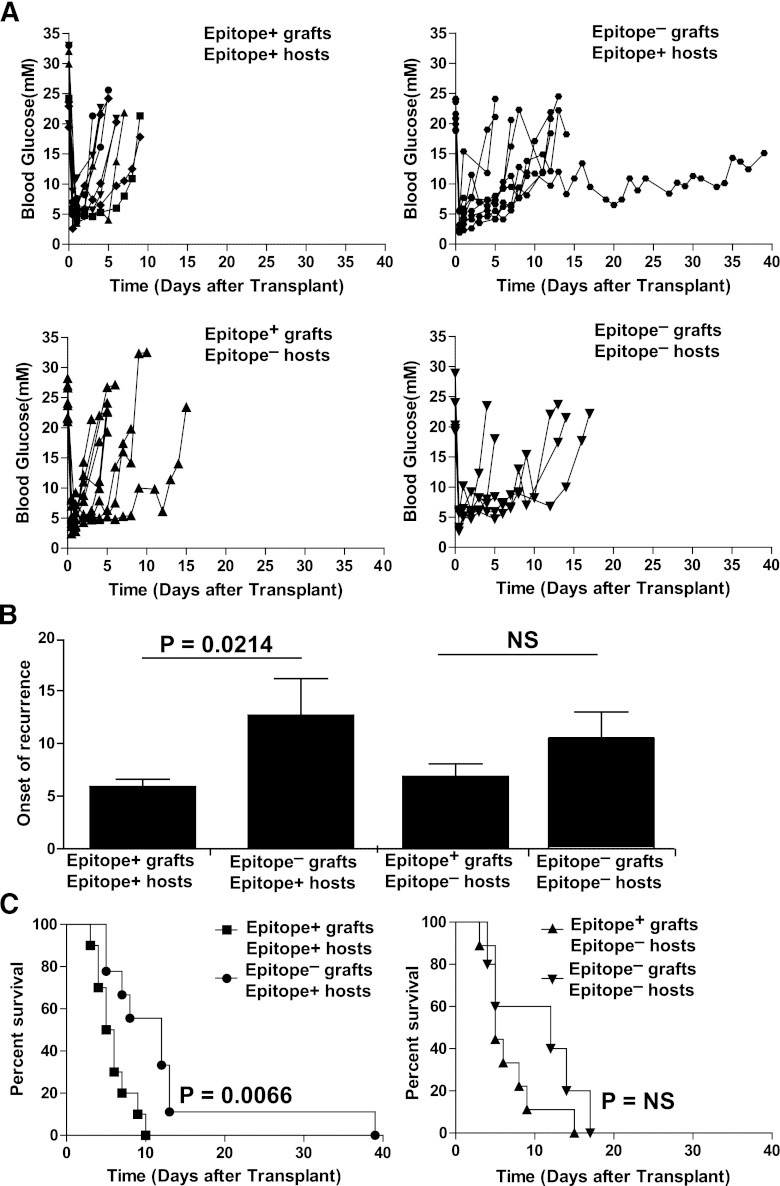FIG. 1.
Survival of islet grafts from IGRP206–214-competent or IGRP206–214-deficient donors in spontaneously diabetic IGRP206–214-competent or IGRP206–214-deficient NOD hosts. A: Individual blood glucose curves of diabetic NOD hosts receiving NOD.scid (n = 10) or NOD.rag2KI/KI.IGRPK209A/F213AKI/KI islets (n = 9), and diabetic NOD.IGRPK209A/F213AKI/KI hosts receiving NOD.scid (n = 9) or NOD.rag2−/−.IGRPK209A/F213AKI/KI islets (n = 5). B: Average onset of disease recurrence after transplantation (in days) in the four different donor/host combinations. P values were obtained by Mann-Whitney U test. C: Survival curves of grafts in diabetic NOD (left) or NOD.IGRPK209A/F213AKI/KI hosts (right). P values were calculated via log-rank test. For (B) and (C), differences between epitope-positive and epitope-negative grafts in epitope-positive hosts remained statistically significant upon exclusion of the epitope-negative graft that survived to 40 days (P = 0.0395 in B; and P = 0.0353 in C).

